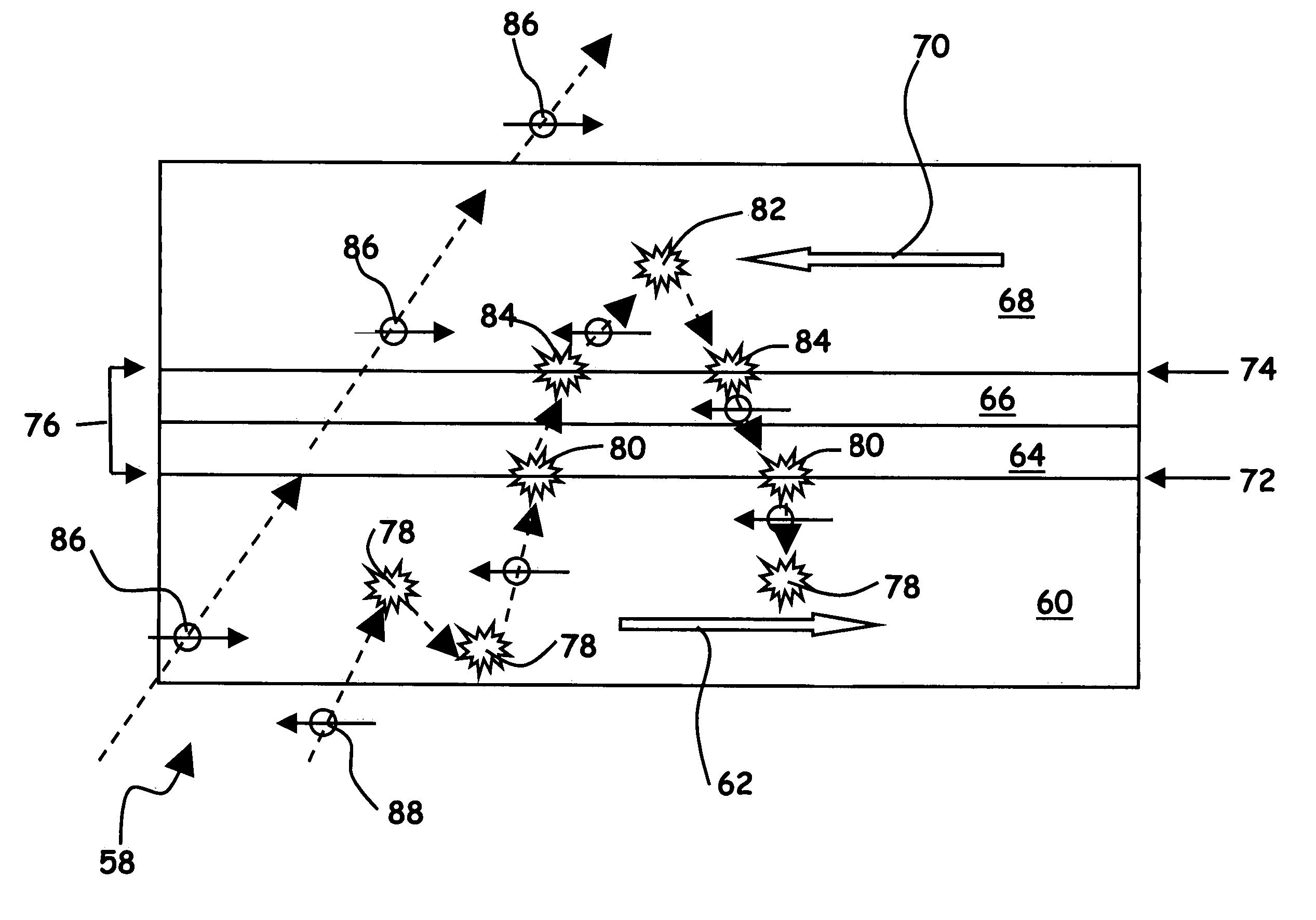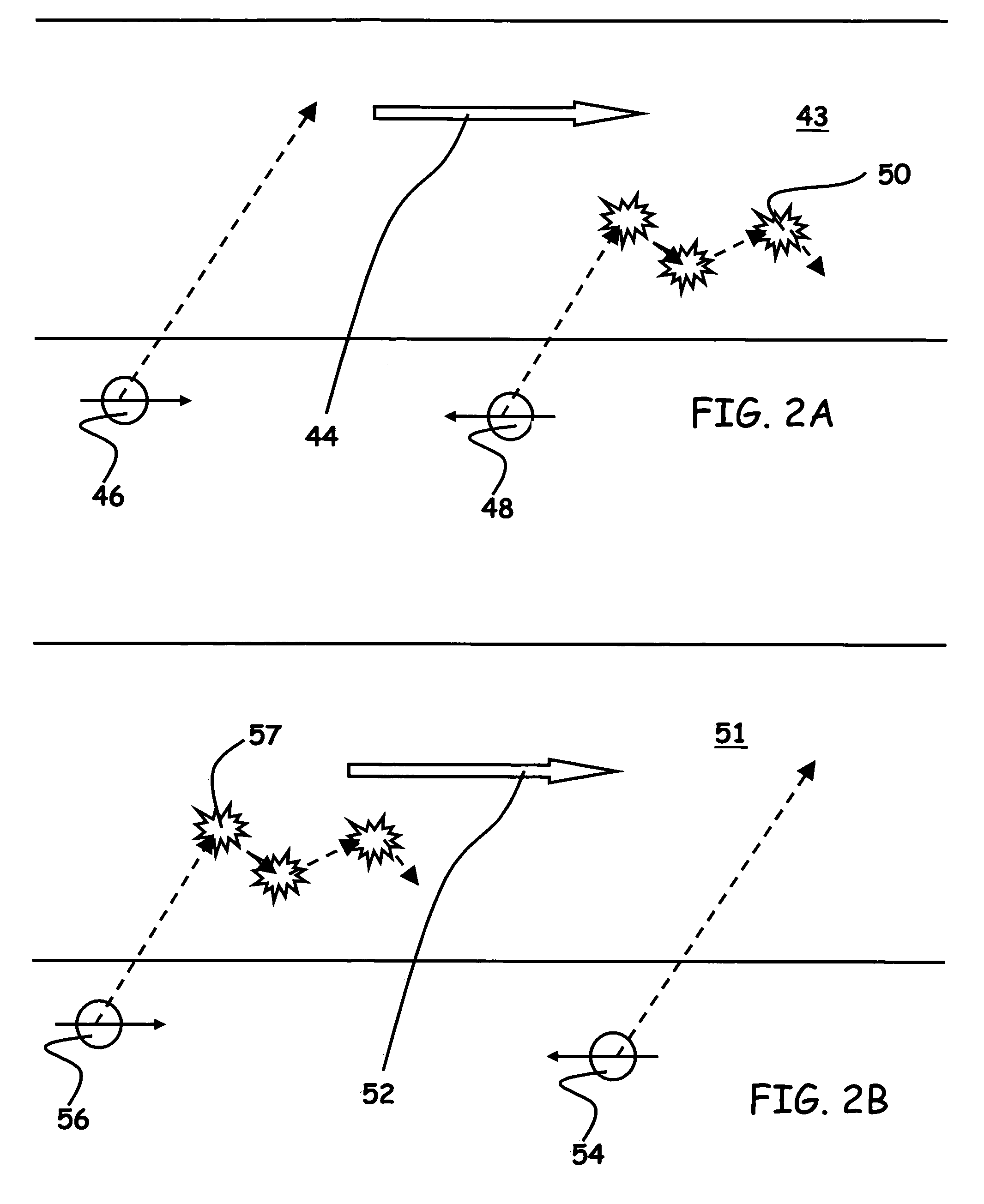Spin polarization enhancement artificial magnet
a technology of artificial magnets and spin polarization, applied in the field of spin-dependent scattering, can solve the problems of loss, limiting factor in many cip sensors, and achieve the effect of enhancing the spin polarization of current passing
- Summary
- Abstract
- Description
- Claims
- Application Information
AI Technical Summary
Benefits of technology
Problems solved by technology
Method used
Image
Examples
embodiment 90
[0058]FIG. 5A illustrates a first alternative embodiment 90 of the SPEA magnet. SPEA magnet 90 comprises: first magnetic layer 92, first spacer layer 94, second spacer layer 96, second magnetic layer 98, third spacer layer 100, fourth spacer layer 102, and third magnetic layer 104. SPEA magnet 90 also comprises: first interface 106, second interface 108, third interface 110, and fourth interface 112.
[0059]First magnetic layer 92 contacts first spacer layer 94 thereby forming first interface 106. Similarly, second magnetic layer 98 contacts second spacer layer 96, thereby forming second interface 108. First spacer layer 94 and second spacer layer 96 may also be described as a bi-layer spacer. Second magnetic layer 98 additionally contacts third spacer layer 100 thereby forming third interface 110. Third magnetic layer 104 contacts fourth spacer layer 102 thereby forming fourth interface 112. Third spacer layer 100 and fourth spacer layer 102 may also be described as a bi-layer spacer...
fourth embodiment
[0085]FIG. 10 is an SPEA magnet. SPEA magnet 184 includes an alternative arrangement of interface types: inverse—positive—inverse groupings of interfaces. Each group may include either one or two interfaces.
[0086]SPEA magnet 184 comprises: bottom spacer 186; first interface 188; first magnetic layer 190 with magnetization 191; second interface 192; first bi-layer spacer 194 formed of first layer 196 and second layer 198; third interface 200; second magnetic layer 202 with magnetization 203; fourth interface 204; second bi-layer spacer 206 formed of first layer 208 and a second layer 210; fifth interface 212; third magnetic layer 214 with magnetization 215; sixth interface 216; and top spacer 218.
[0087]First interface 188 is formed at the bottom of first magnetic layer 190 where it contacts bottom spacer 186. Second interface 192 is formed at the top of first magnetic layer 190 where it contacts first layer 196 of first bi-layer spacer 194. Third interface 200 is formed at the bottom...
PUM
| Property | Measurement | Unit |
|---|---|---|
| magnetization | aaaaa | aaaaa |
| magnetic | aaaaa | aaaaa |
| non-magnetic | aaaaa | aaaaa |
Abstract
Description
Claims
Application Information
 Login to View More
Login to View More - R&D
- Intellectual Property
- Life Sciences
- Materials
- Tech Scout
- Unparalleled Data Quality
- Higher Quality Content
- 60% Fewer Hallucinations
Browse by: Latest US Patents, China's latest patents, Technical Efficacy Thesaurus, Application Domain, Technology Topic, Popular Technical Reports.
© 2025 PatSnap. All rights reserved.Legal|Privacy policy|Modern Slavery Act Transparency Statement|Sitemap|About US| Contact US: help@patsnap.com



